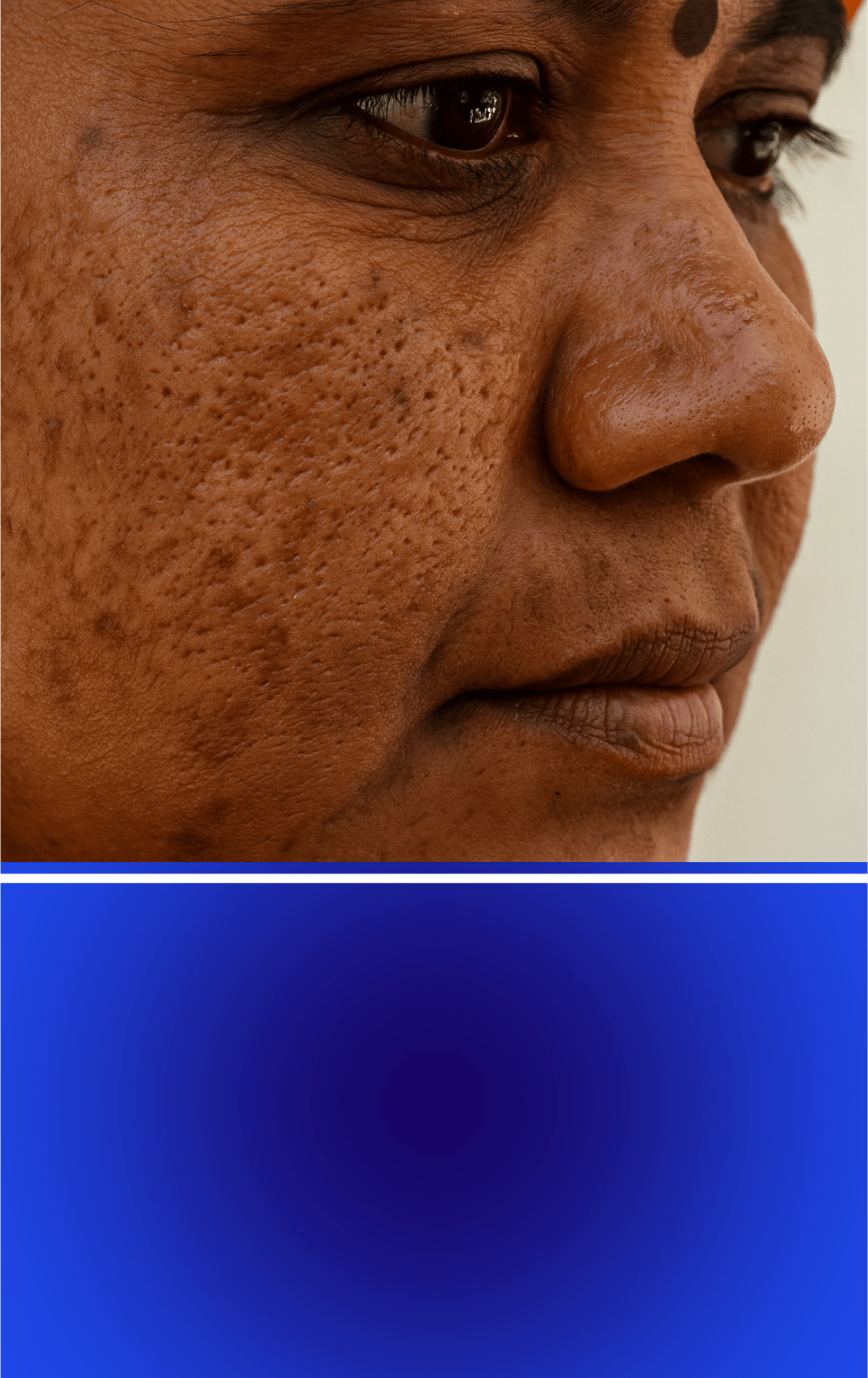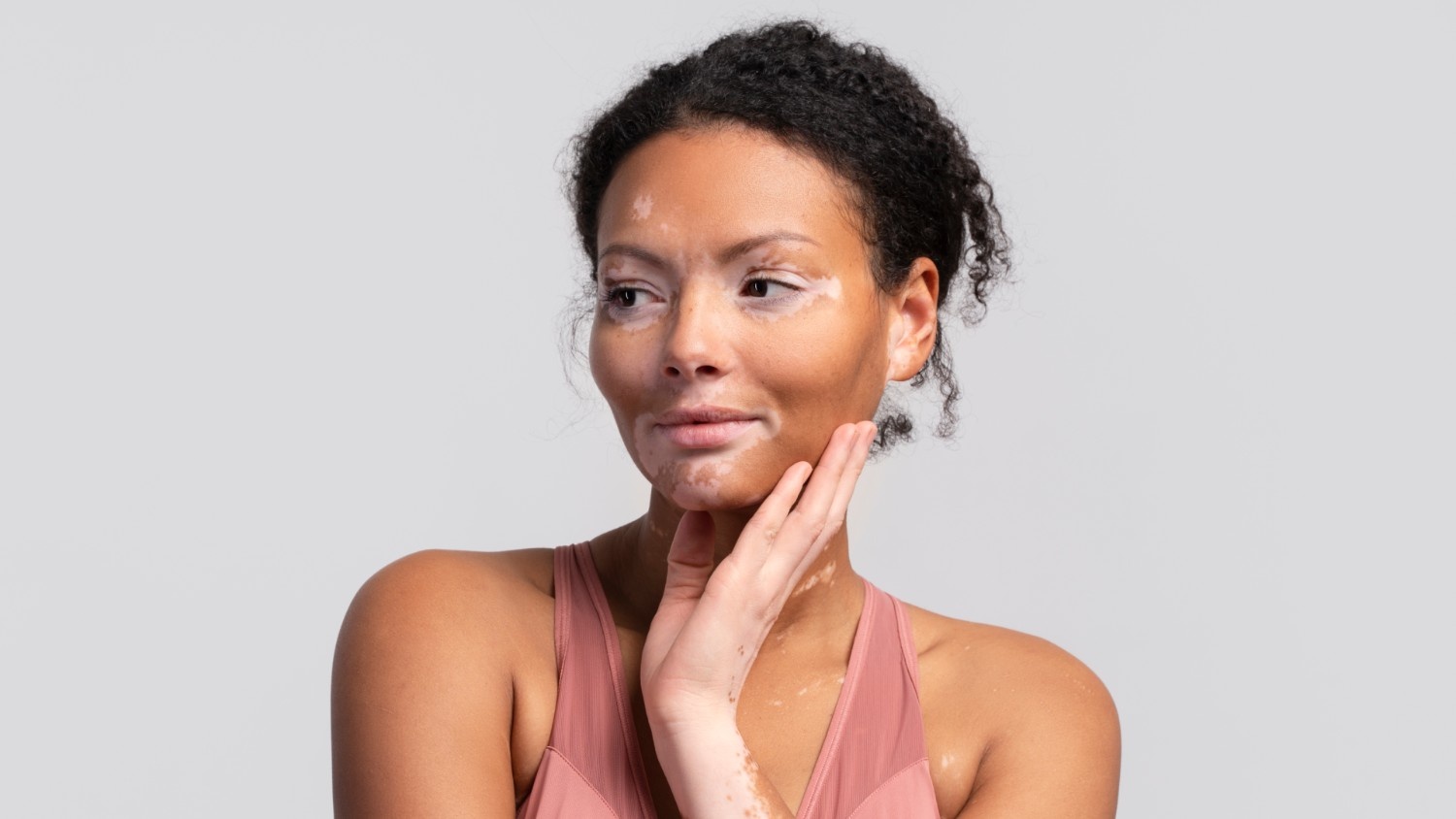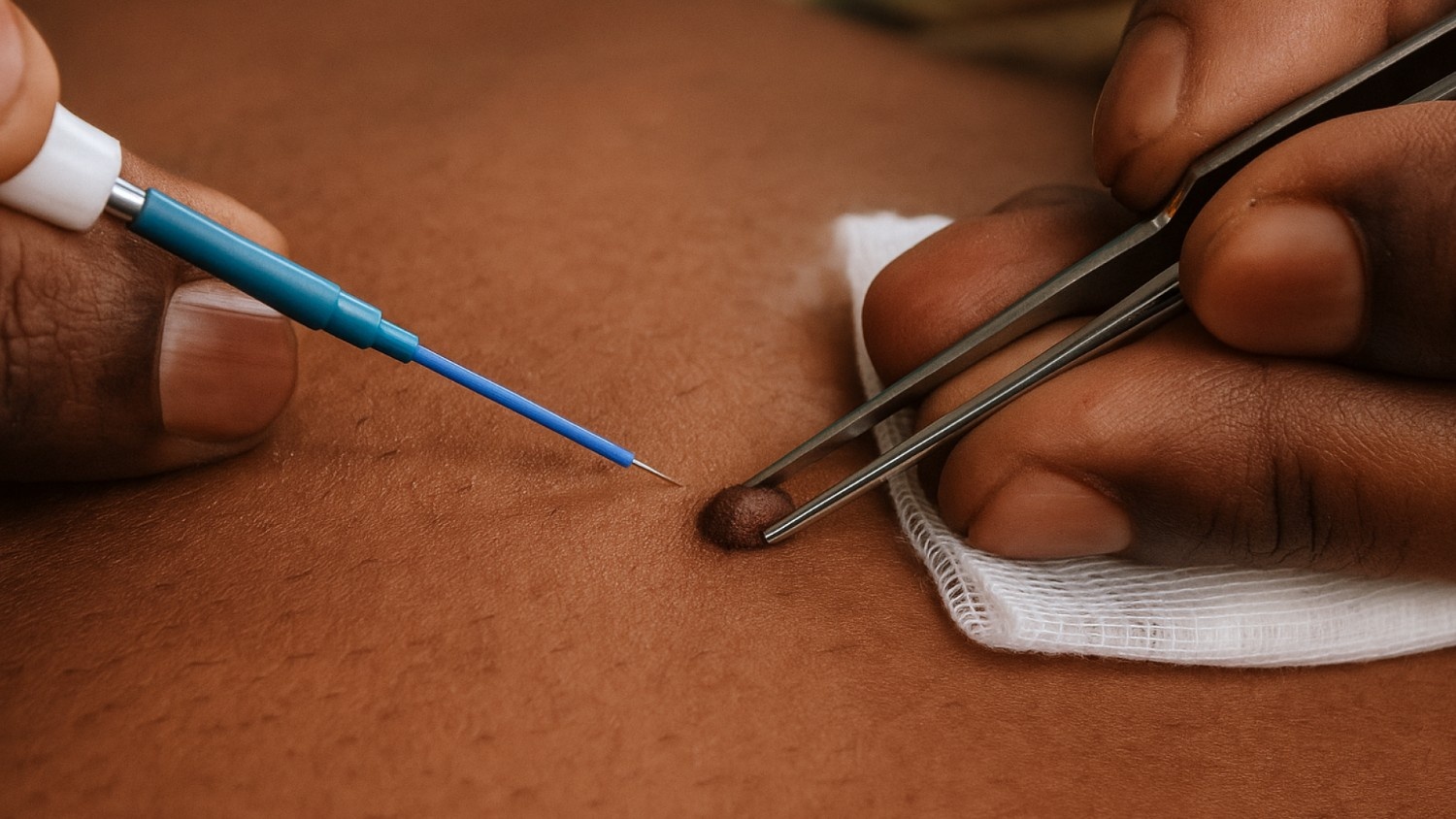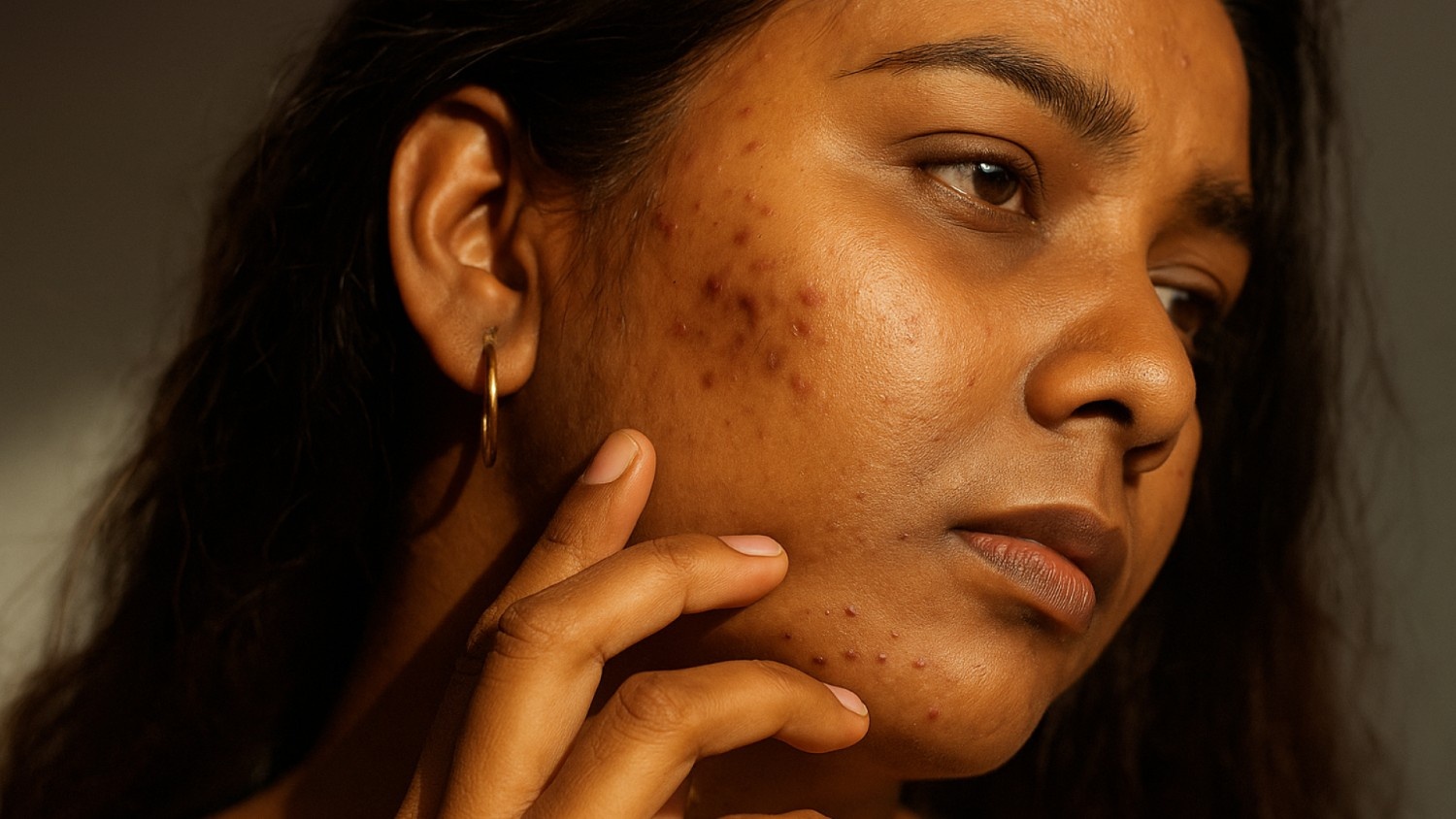It’s completely normal to notice changes under your eyes as the years go by, dark circles, puffiness, or hollowness, that make you look more tired than you feel. For many, these changes aren't just cosmetic; they can affect confidence and how others perceive your energy or mood. That’s one reason why more people in India are turning to medical solutions like dermal fillers under the eyes to restore a more rested, natural appearance.
In fact, the demand for such treatments is steadily growing. The dermal fillers market in India is expected to rise from USD 131.46 million in FY2024 to USD 325.49 million by FY2032, with a projected CAGR of 12%. This growth reflects a clear shift, people are becoming more aware of safe, science-backed options to address common skin concerns.
In this blog, you’ll get a clear overview of dermal fillers under the eyes, what they are, who they suit, the types used, and how the treatment works. We’ll also cover benefits, risks, how long results last, care tips, cost in India, and safe alternatives.
Overview
- Under-eye dermal fillers are used to treat hollowness, dark circles, and volume loss due to ageing or skin conditions.
- The treatment process includes a medical consultation, careful preparation, precise injection, and follow-up care.
- Choosing a dermatologist-led clinic ensures safety, personalised treatment, and evidence-based decisions.
- Results are typically subtle and natural-looking, improving the under-eye area without surgery.
- Ethical clinics like Velantis Dermatology prioritise patient care over cosmetic trends or sales-driven procedures.
What Are Under-Eye Dermal Fillers?
Under-eye dermal fillers are soft injections used to add volume under the eyes, in the area called the tear trough. This area can look hollow or dark due to ageing, genetics, or other skin conditions. The fillers are usually made from hyaluronic acid, a substance that naturally exists in your body.
Who Should Consider Under-Eye Fillers?
If you're considering under-eye fillers, it’s important to know whether this treatment is medically appropriate for you. Here are key factors to consider:
- Hollowness or Volume Loss: If you notice sunken or shadowed areas under your eyes, fillers can help restore volume and improve overall contour.
- Healthy Skin Condition: Your skin should be free from infections, eczema, or inflammation in the treatment area. Reasonable skin thickness and elasticity are also important for achieving smooth, even results.
- No Major Puffiness or Fat Pads: Fillers are not suitable if you have prominent under-eye bags or loose skin, as they may worsen the appearance rather than improve it.
- Medically Fit for Treatment: You should be in stable health, not pregnant or breastfeeding, and without any known allergies to filler materials such as hyaluronic acid.
- Realistic Expectations: Fillers offer subtle, temporary improvements. If you're looking for non-surgical support and are comfortable with periodic maintenance, this treatment may suit you
Types of Fillers Used for Under Eyes
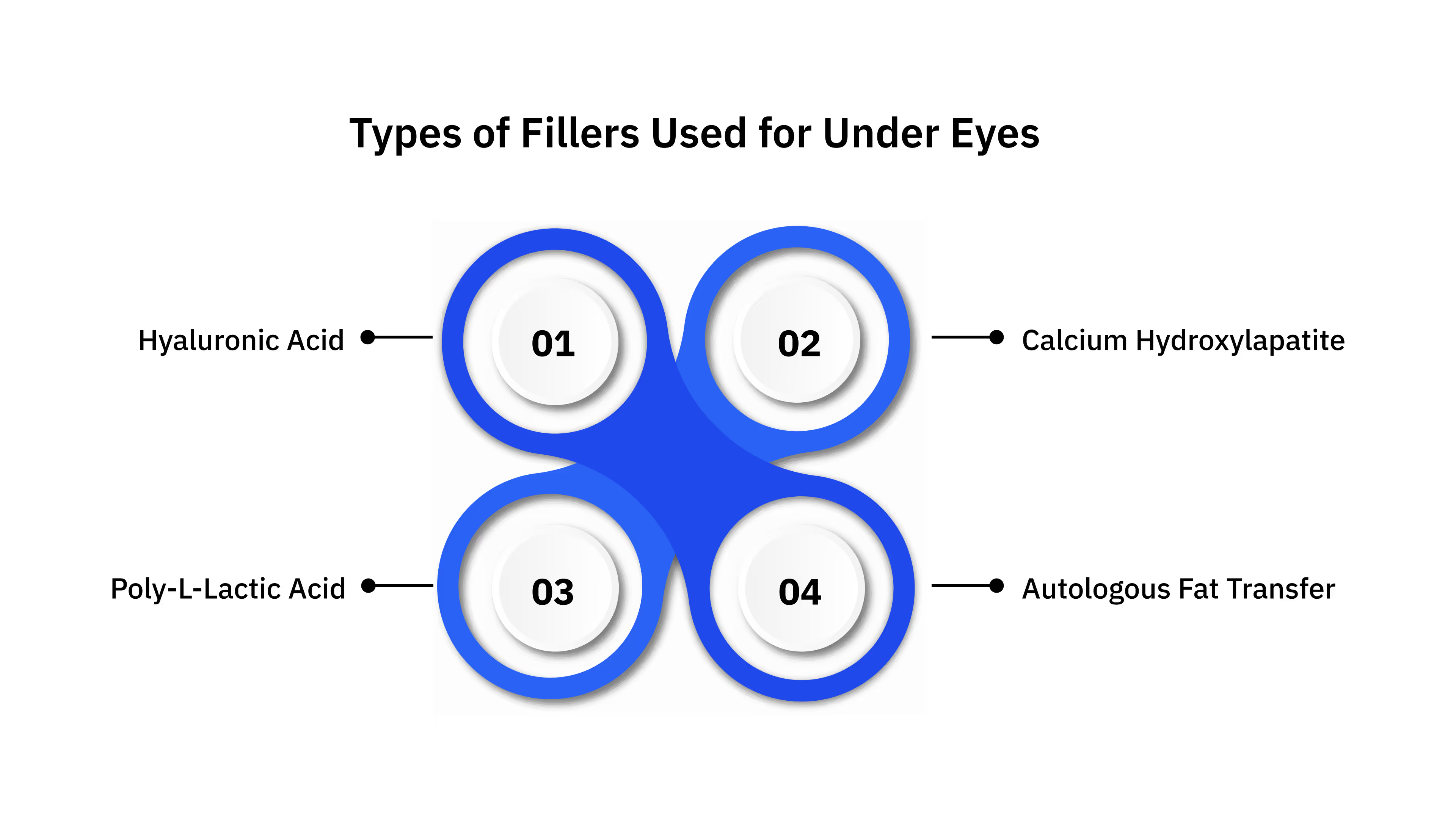
When thinking about under-eye fillers, it's important to know which types are commonly used and why. These fillers are chosen based on safety, how well they suit the delicate under-eye area, and their compatibility with different skin types, including sensitive or condition-affected skin. Below are the main types:
1. Hyaluronic Acid (HA) Fillers
These are the most commonly used fillers for the tear trough area. Hyaluronic acid occurs naturally in the body, which makes these fillers well-tolerated and less likely to cause adverse reactions. They provide subtle volume and hydration and can be reversed if necessary, offering both flexibility and safety in treatment.
2. Calcium Hydroxylapatite Fillers
Fillers such as Radiesse belong to this category. They are denser and offer structural support, but are used cautiously in the under-eye region due to a higher risk of uneven texture or visible lumps. They may be considered in cases of marked volume loss, under close clinical supervision.
3. Poly-L-Lactic Acid (PLLA) Fillers
These fillers, including Sculptra, promote gradual collagen production rather than providing immediate volume. They are not routinely used under the eyes and are only considered in specific cases where their benefits outweigh the risks. Their use requires advanced technique and careful patient selection.
4. Autologous Fat Transfer
In some situations, fat harvested from your own body may be used to restore volume in the under-eye area. This approach is more invasive and involves a longer recovery period. It is typically reserved for individuals with significant volume loss or when standard fillers are not appropriate.
Key Benefits of Under-Eye Fillers
Under-eye dermal fillers offer a medically guided approach to treating volume loss and related changes in the tear trough area. Here are the primary benefits:
- Restores Lost Volume: Fillers replace volume in hollow or sunken areas beneath the eyes, helping to improve under-eye contours. This is especially helpful when volume loss is caused by ageing, genetics, or certain skin conditions.
- Reduces Dark Circles and Shadows: By supporting the under-eye structure, fillers can reduce the depth of the tear trough, which may lessen the appearance of dark circles.
- Softens Fine Lines: The added support from fillers helps improve the appearance of fine lines caused by thinning skin or reduced elasticity.
- Minimally Invasive with Short Recovery: The procedure involves targeted injections and usually causes only mild swelling or bruising that settles within a few days.
- Reversible and Biodegradable: Hyaluronic acid-based fillers naturally break down over time and can be safely dissolved if needed.
Step-by-Step Process of Getting Under-Eye Fillers
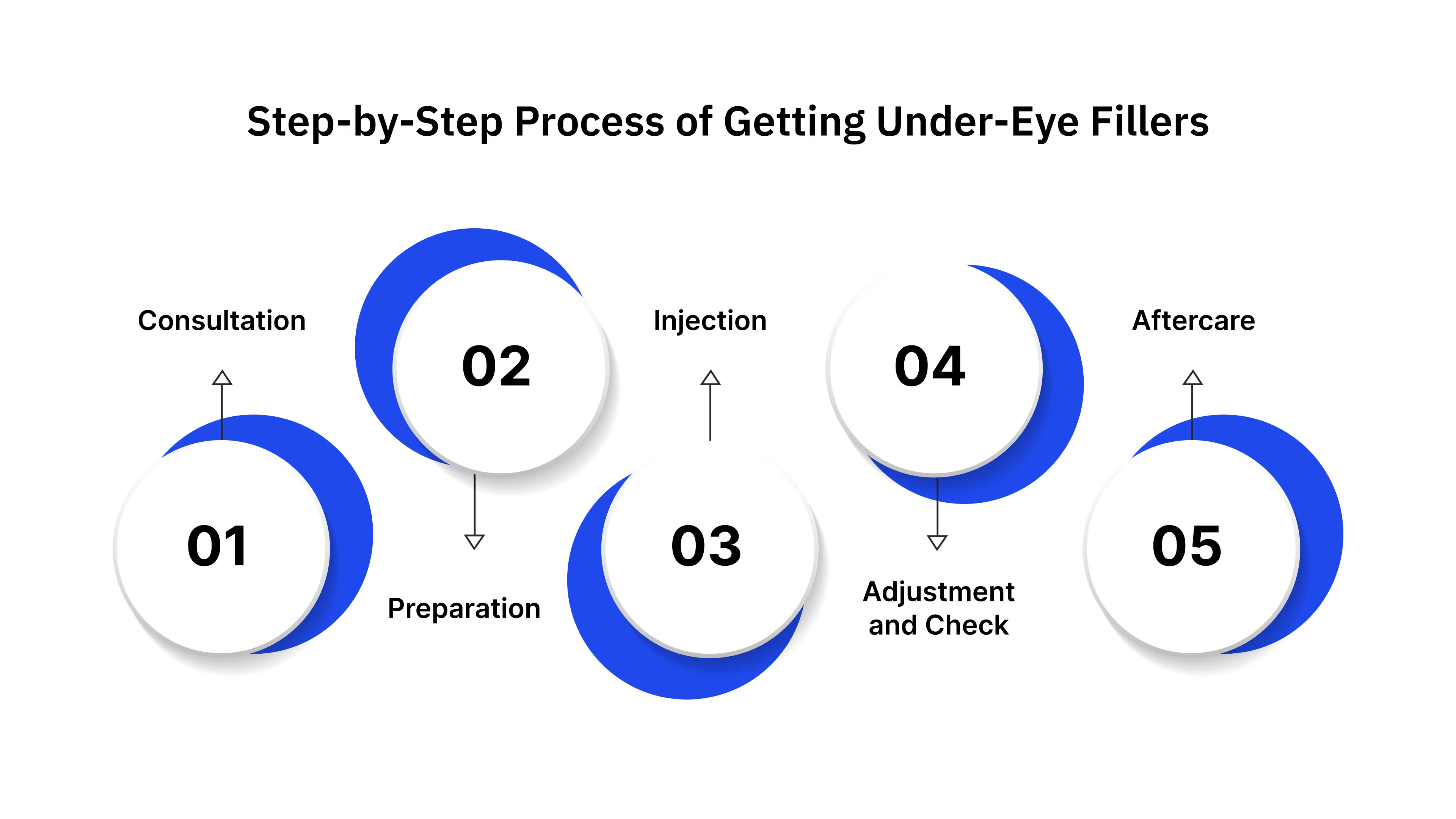
Understanding the steps involved in getting under-eye fillers can help you feel more prepared and confident about the treatment. Here is what typically happens during a medically supervised procedure.
Step 1: Consultation
Your treatment begins with a full consultation with a qualified practitioner. This includes examining your facial structure, skin quality, and medical history. You’ll have a chance to discuss your concerns, ask questions, and understand what results are possible. A personalised treatment plan is created based on clinical assessment and your specific needs.
Step 2: Preparation
On the day of the procedure, the under-eye area is gently cleansed to remove any makeup or surface oils. A numbing cream is usually applied to make the treatment more comfortable. The practitioner may mark the skin to help guide accurate filler placement.
Step 3: Injection
Once the area is numb, the filler is carefully injected into the tear trough using either a fine needle or a blunt-tipped cannula, depending on what suits your anatomy best. The amount and depth of filler are controlled to ensure even correction and avoid overfilling.
Step 4: Adjustment and Check
After the injection, the filler is gently smoothed out to ensure an even result. The practitioner checks symmetry and placement, and if needed, makes small adjustments. This helps reduce the chance of uneven texture or visible lumps.
Step 5: Aftercare
You’ll receive clear instructions on how to care for the area after the procedure. You may be advised to avoid heavy exercise or sun exposure for a day. Mild swelling or bruising is normal and usually settles quickly. A follow-up may be scheduled to review the results and address any questions or concerns.
Looking for a safe and trusted way to treat tired-looking or ageing under-eyes? At Velantis Dermatology, all treatments, from fillers to skin tightening, are done by an expert dermatologist with a focus on your safety and real results. Book a consultation to get honest, personalised advice for your skin.
Once you know the steps, it’s also good to understand the possible risks and side effects before getting under-eye fillers.
Risks and Side Effects to Know About Under-Eye Fillers
Choosing under-eye fillers involves understanding the possible side effects, particularly for individuals with sensitive skin or underlying conditions. While most reactions are temporary and mild, it's essential to be aware of all potential outcomes to make an informed decision.
Common Side Effects
- Bruising and Swelling: These are the most common responses after treatment, especially due to the thinness of the skin in the under-eye area. They typically resolve within a few days.
- Redness, Tenderness, or Discomfort: Temporary redness or soreness at the injection site is expected. Persistent or worsening pain should be reviewed by a medical professional.
- Bluish Tint (Tyndall Effect): If the filler is placed too close to the surface, a bluish discolouration may appear. This is usually correctable by dissolving the filler.
- Lumps or Unevenness: Small lumps or asymmetry may occur due to technique or individual response. These can sometimes require further adjustment.
- Infection: Though rare, infections may present as persistent redness, swelling, or discharge. Prompt medical treatment is advised if symptoms develop.
- Allergic Reactions: Mild to moderate allergic responses, such as itching or swelling, may occur. Inform your practitioner of any known allergies before treatment.
- Filler Migration: In uncommon cases, the filler may shift from the injection site, resulting in puffiness or changes in contour. This may need correction.
- Delayed Swelling: Some individuals may experience swelling weeks or months after treatment, particularly if prone to fluid retention or malar bags.
Less Common but Serious Risks
- Vascular Complications: If filler is mistakenly injected into a blood vessel, it may cause tissue damage, vision loss, or stroke. Immediate medical care is essential for symptoms like severe pain, sudden vision changes, or skin colour changes.
- Nerve Disturbance: Rarely, nerve irritation may result in numbness or tingling around the area, which can take time to resolve.
- Scarring: Although extremely rare, scarring may occur if there is a severe complication or improper injection technique.
How Long Do Under-Eye Fillers Last?
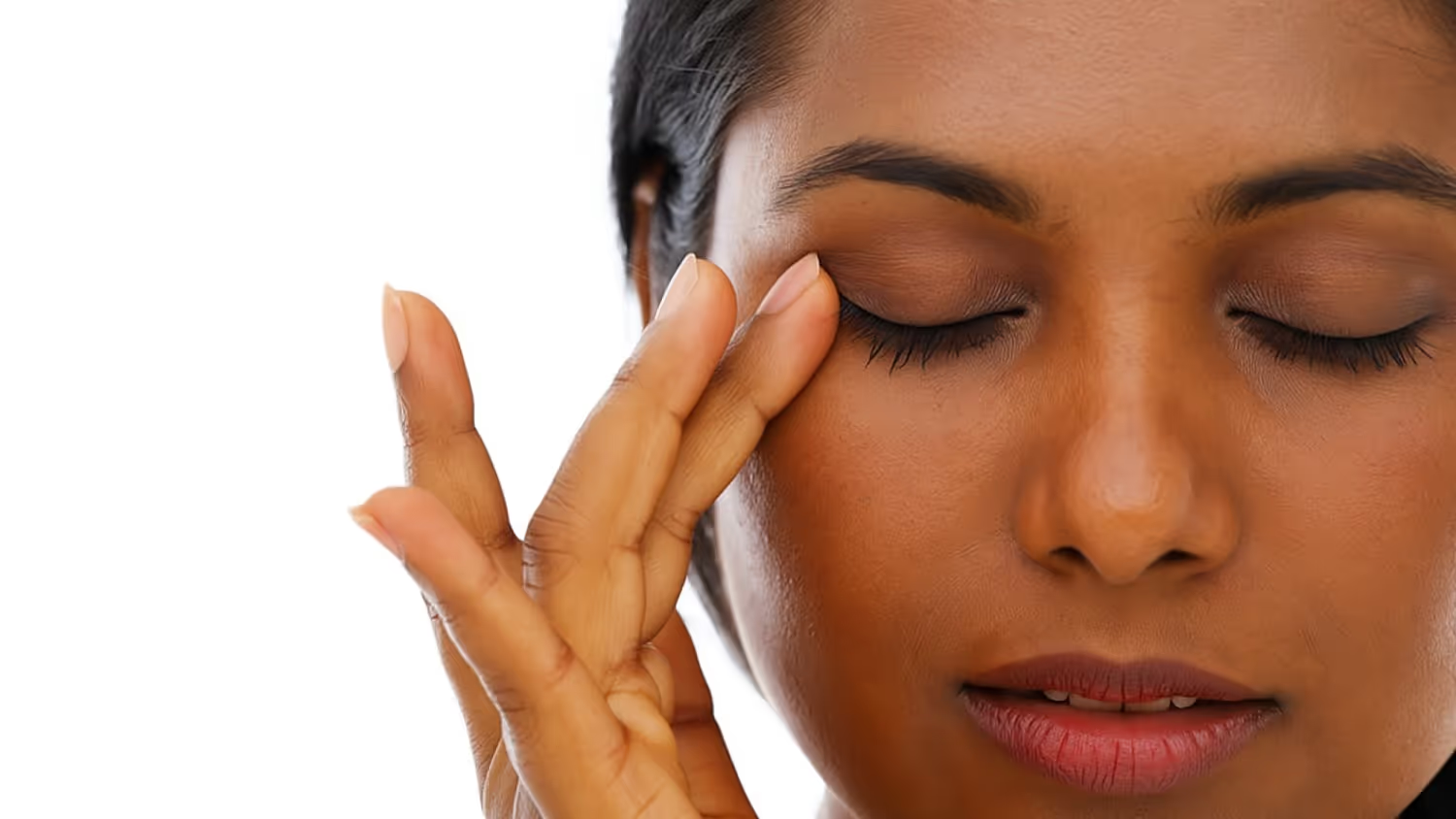
Under-eye fillers generally last between 9 and 18 months, depending on the type of filler used and how your body responds.
- Most fillers in this area are made with hyaluronic acid, a substance the body naturally breaks down over time.
- The longevity of results varies based on several factors, including skin texture, metabolism, and lifestyle habits such as smoking or prolonged sun exposure.
- Individuals with thicker or more elastic skin may notice the effects last longer, while those with thinner or more delicate under-eye skin may require touch-ups sooner.
Cost of Under-Eye Fillers
In Chennai, the cost of under-eye dermal fillers generally ranges between ₹20,000 and ₹45,000 per session, depending on several clinical considerations. The final price often reflects the type and quantity of filler used, along with the expertise of the medical practitioner.
Key factors that can influence the overall cost include:
- Extent of Correction Required: More pronounced hollowness or discolouration may need a larger volume of filler or multiple sessions.
- Doctor’s Qualifications and Experience: In Chennai, experienced dermatologists and aesthetic practitioners may charge more due to their skill and precision.
- Clinic Infrastructure and Standards: Facilities that follow strict medical protocols and prioritise patient safety may include higher service charges.
- Post-Treatment Care: Costs may also cover follow-up consultations, prescribed medication, or additional procedures where needed.
Wondering if under-eye fillers are right for you and fit your budget? Start with a one-on-one consultation at Velantis Dermatology to get expert guidance, transparent pricing, and a treatment plan that aligns with your needs.
If you're unsure about fillers or want to explore other options, there are alternative treatments that may suit your needs.
Alternatives to Under-Eye Fillers
If you're not comfortable with under-eye fillers or have sensitive skin or medical concerns, there are other safe and effective options. These treatments can help reduce dark circles, fine lines, and skin sagging without adding volume or using traditional fillers.
1. Skin Rejuvenation Treatments
- Laser Therapy: This targets dark spots and boosts collagen to improve skin texture, no injections needed.
- Chemical Peels: These gently remove dead skin cells to make the under-eye area look brighter and more even.
- LED or IPL Light Therapy: These light-based treatments help fix uneven tone and support healthier skin.
2. Polynucleotide Injections
These injections use natural substances to improve your skin’s strength and hydration. Instead of filling the area, they work by boosting collagen and making the skin under your eyes look firmer and more refreshed over time.
3. Microneedling and Radiofrequency Microneedling
Microneedling uses tiny needles to trigger your skin’s healing process. This helps make the under-eye area smoother and tighter. Radiofrequency adds heat to speed up collagen growth and improve results.
4. Skin-Boosting Injections
These are small injections with hydrating ingredients like hyaluronic acid. They don’t add bulk but help improve skin quality, reduce dryness, and make the under-eye area look healthier.
5. Under-Eye Botox (in Selected Cases)
If you mainly have fine lines or wrinkles caused by muscle movement, low-dose Botox might help. It relaxes the muscles under your eyes to reduce lines. However, it won’t fix volume loss or deep hollows.
Conclusion
Dermal fillers under the eyes can be a valuable option if you're dealing with hollowness, volume loss, or tired-looking eyes. But achieving safe and natural-looking results depends on more than just the filler; it requires clinical expertise and ethical treatment practices. That’s why it's important to choose a trusted medical clinic that puts your skin health first.
Velantis Dermatology in Chennai offers a doctor-led, evidence-based approach to aesthetic dermatology. Founded by Dr. Janani, the clinic is built on medical precision and patient-first care. It avoids commercial shortcuts and cosmetic trends, instead focusing on structured, science-backed treatments. From dermal fillers to laser resurfacing and chemical peels, all procedures are performed by a qualified MD Dermatologist, Dr. Janani Sree C M, in a safe, clinical setting.
Book a personalised consultation at Velantis Dermatology in Chennai to receive honest, medically sound advice tailored to your skin needs, without pressure or sales talk.
FAQs
Q1. Can fillers permanently remove dark circles?
A1. Under-eye fillers do not offer a permanent fix for dark circles. They help by adding volume to reduce the appearance of shadows in hollow areas. However, the effect usually lasts between 9 and 12 months. How long it stays depends on the type of filler, your skin condition, and how your body breaks it down. Ongoing maintenance is needed for long-term results. Permanent fillers exist, but they are not widely recommended under the eyes due to safety concerns.
Q2. Do under-eye fillers cause pain?
A2. Most people find the procedure comfortable. The fillers often contain a local anaesthetic, which helps reduce discomfort during the injection. You may feel slight pressure or a small prick, but this is usually mild. Any tenderness or swelling that follows tends to settle within a few days.
Q3. When will I see the results?
A3. You will likely notice an improvement right after the treatment. The under-eye area appears fuller and smoother immediately. Final results become clearer over the next few days as swelling reduces.
Q4. Are under-eye fillers safe for all skin types?
A4. Fillers are generally considered safe across most skin types when done by a qualified medical expert. However, if you have very thin skin, ongoing skin issues, or poor lymphatic drainage, a personalised assessment is important. Always share your full medical history with your practitioner.
Q5. How long do the effects last?
A5. Hyaluronic acid fillers used under the eyes typically last around 9 to 12 months. Some fillers made from other substances may last longer. Factors such as your skin quality, metabolism, and lifestyle can affect how long the results stay. Regular top-up sessions help maintain the outcome.
Q6. What are the possible risks and side effects?
A6. Minor side effects include swelling, mild bruising, or tenderness at the injection site. These usually resolve on their own within a few days. Less common risks include uneven results or small lumps. Serious complications, such as blood vessel blockage, are rare but possible. Choosing a medically trained practitioner with experience in facial anatomy greatly lowers the risk.
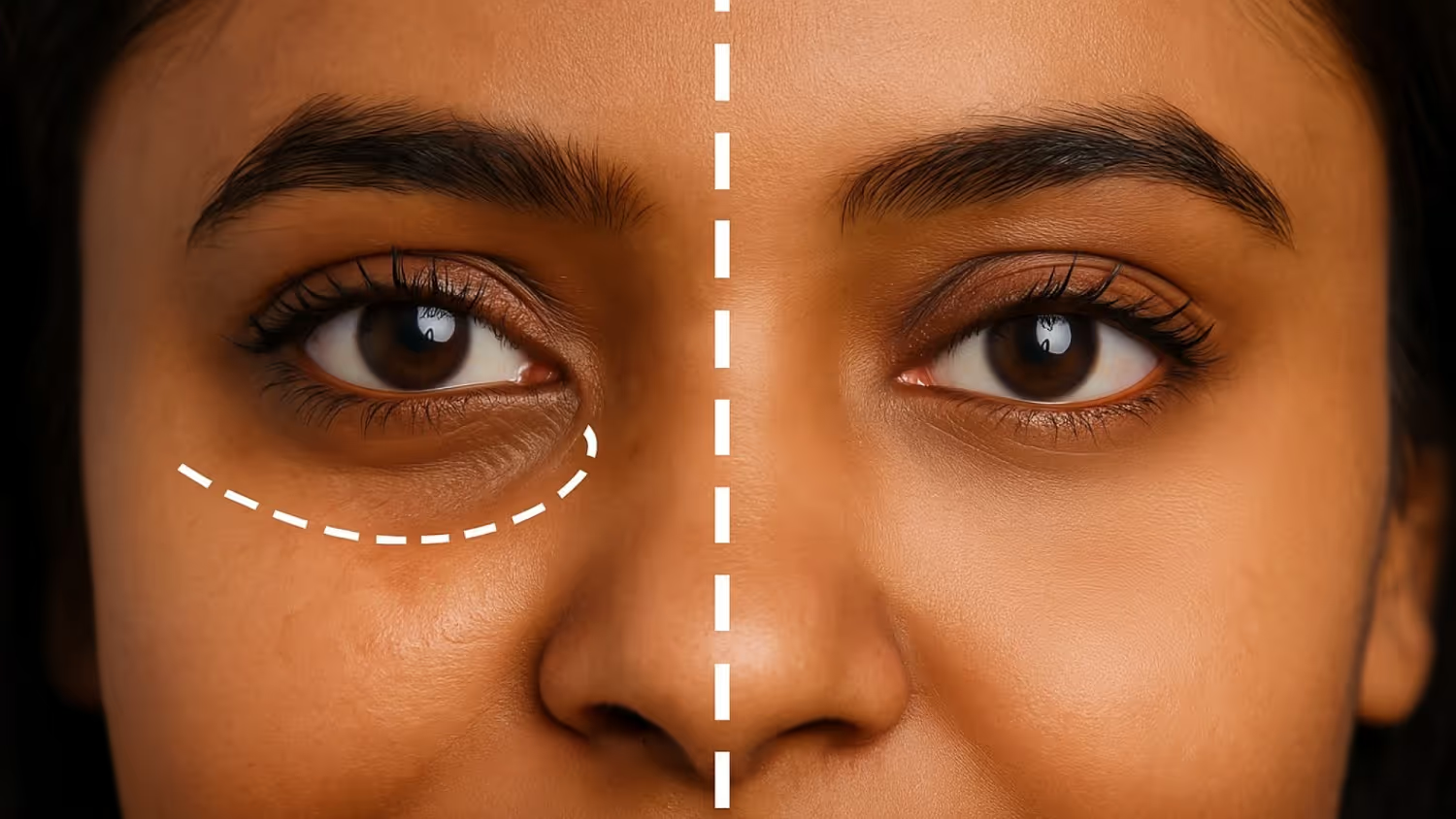

.png)
